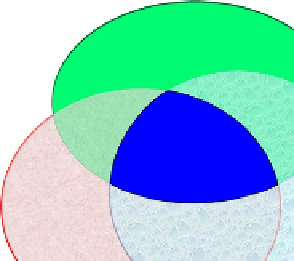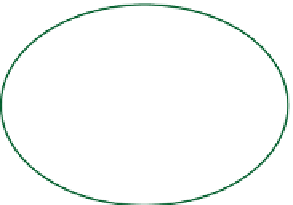Biomedical Engineering Reference
In-Depth Information
Environmental
Bearable
Viable
Sustainable
Social
Economic
Equitable
FIGURE 15.2
The three dimensions of sustainability.
compromising the ability of future generations to meet their own needs.” [United Nations
General Assembly (March 20, 1987). “Report of the World Commission on Environment and
Development: Our Common Future; Transmitted to the General Assembly as an Annex to
document A/42/427
d
Development and International Co-operation: Environment; Our
Common Future, Chapter 2: Towards Sustainable Development; Paragraph 1.”]. By default,
when we discuss sustainability, we mean sustainability in human terms.
In ecology, the word sustainability describes how biological systems remain (qualitatively)
diverse and productive over time, preferably indefinitely. Long-lived and healthy wetlands
and forests are examples of sustainable biological systems. For humans, sustainability is the
potential for long-termmaintenance of well-being, which has three key dimensions: environ-
mental, economic, and social dimensions (
Fig. 15.2
).
Healthy ecosystems and environments provide vital goods (chemicals, materials, and
energy) and services to humans and other organisms. The presence of humans, like any
other living organisms that are part of the ecosystem, contributes or affects the sustain-
ability of the ecosystem on earth. Higher comfortability levels or optimum living conditions
are demanded by all the organisms in the ecosystem. The optimum living conditions are
different for different organisms and thus adverse effects on other organisms can develop
if one organism is capable of achieving its ultimate comfortability. Human is the dominant
life form and thus human needs are first to be met. Corresponding to the three dimensions
of sustainability, there are three major ways of reducing “negative” human impact and
enhancing ecosystem services (
Fig. 15.3
). The first is process and/or product optimization;
this approach ensures the minimum impact to the ecosystem we are living in. Process opti-
mization is a significant part of this text for bioprocesses and bio-products, although not
directly discussed in this chapter. The second is environmental management; this approach
is based largely on information gained from earth science, environmental science, and
conservation biology. This text has some coverage in engineering aspect for environmental
engineering processes. The third approach, and equally important one, is management of
human consumption of resources, which is based largely on information gained from social







Search WWH ::

Custom Search